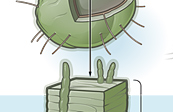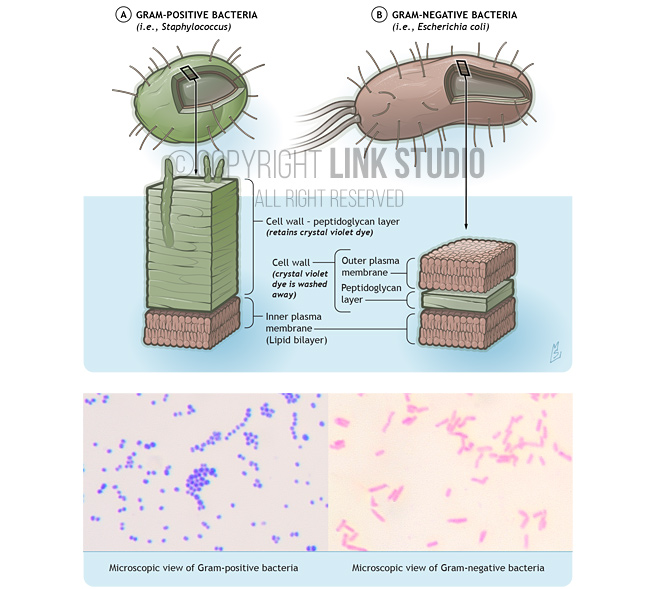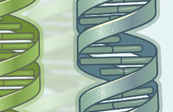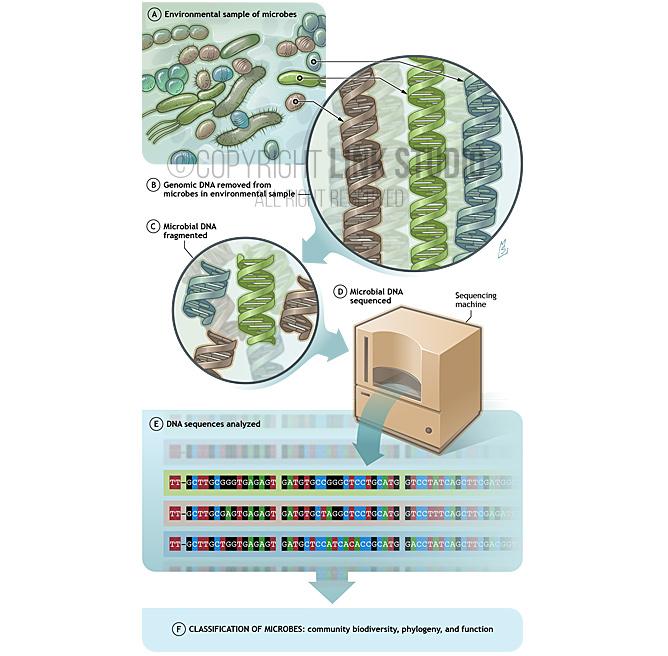Our Work
Human Microbiome


Gram-Positive and Gram-Negative Bacteria
Historically, bacteria have been classified as Gram-positive or Gram-negative, which refers to the effects of staining on the structure of bacterial cell walls / membranes.
The human microbiome is vast and complex and scientists are just beginning to understand its complexity and impact on human health and disease. These illustrations are part of a series included in an article describing the microbiome in many parts of the human body, its discovery, the historical context, and current research to learn more about its mysteries. From FASEB’s Breakthroughs in Bioscience series
This illustration is available as Stock | Contact us now for licensing options


Metagenomics
This technique allows for the analysis of specific common genes within environmental samples, which reveals the species (known and unknown) of organisms that are present.
The human microbiome is vast and complex and scientists are just beginning to understand its complexity and impact on human health and disease. These illustrations are part of a series included in an article describing the microbiome in many parts of the human body, its discovery, the historical context, and current research to learn more about its mysteries. From FASEB’s Breakthroughs in Bioscience series
This illustration is available as Stock | Contact us now for licensing options


The Human Microbiome
This editorial illustration conceptualizes the complex environment we have come to know as the human microbiome. Our bodies are under constant attack by foreign noxious microbes and other biological chemicals, while it is protected by colonies of microbes that we have naturally existing within our bodies. These healthy microbes contribute to a vast array of positive effects on our body. However, these microbes can also be wiped out by synthetic antibiotics, leaving an unhealthy balance.
The human microbiome is vast and complex and scientists are just beginning to understand its complexity and impact on human health and disease. These illustrations are part of a series included in an article describing the microbiome in many parts of the human body, its discovery, the historical context, and current research to learn more about its mysteries. From FASEB’s Breakthroughs in Bioscience series
Client
- Federation of American Societies for Experimental Biology (FASEB)
Category
- Medical Illustration
Industry
- Publishing
- Marketing
Audience
- Patient Education
Specialty
- Cell / Molecular Biology